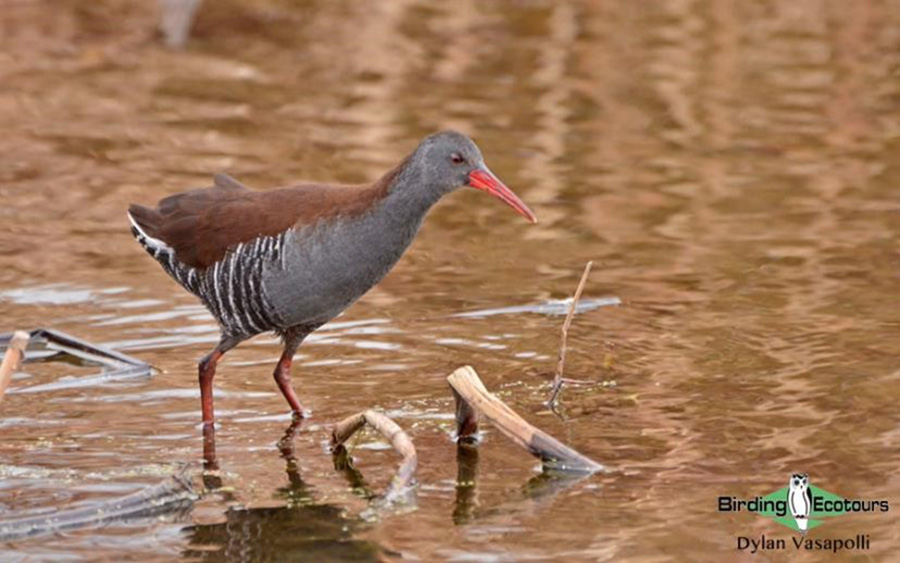Go to South Africa Day Tours | Full length South Africa birding tours | African trip reports | All our birding tours
DOWNLOAD TRIP REPORT
11 JUNE 2021
By Dylan Vasapolli
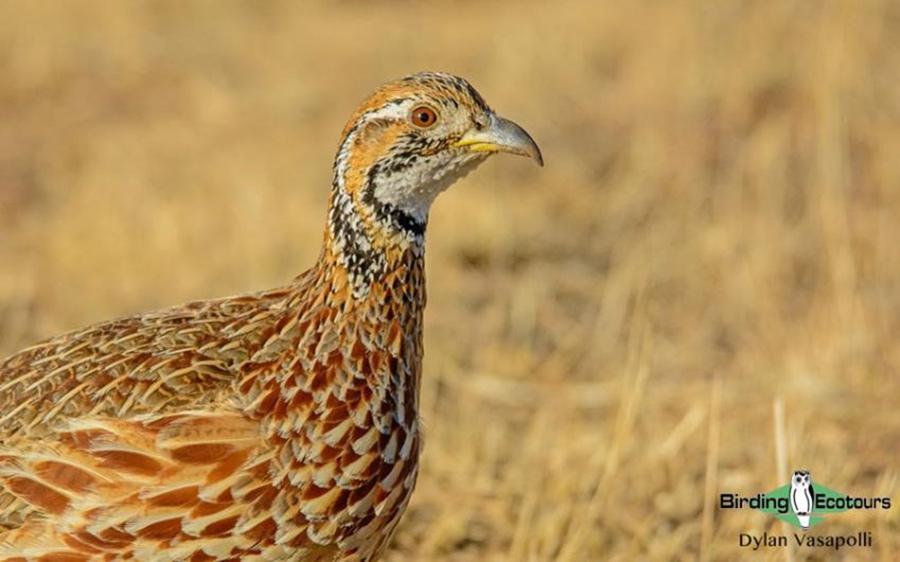 We had point-blank views of Orange River Francolin during our day tour.
We had point-blank views of Orange River Francolin during our day tour.
Overview
This Johannesburg-based, South Africa, birding day tour takes us to some of the fantastic birding sites found to the south of the city. Namely, the excellent Suikerbosrand Nature Reserve, and the south-eastern wetlands around Marievale Bird Sanctuary or the Tsakane Pans.
This trip was carried out for a single client, Bryan, and saw us concentrate on finding as many of the specials occurring in the area as possible. We had a superb South African winter’s day, with calm and sunny conditions throughout, and ultimately had an excellent birding day as well, recording a large number of the many specials that occur here.We ended up with a day total of around 120 species – excellent considering this a mid-winter trip!
Detailed Report
After collecting Bryan from his accommodation in Jo’burg, we made the journey southwards to Suikerbosrand Nature Reserve, where we started our birding in the open grasslands. We arrived shortly after sunrise, and there was a distinct chill in the air as we sipped our coffee and enjoyed our breakfast, while taking in the surroundings. Despite the cold conditions, the birds came in thick and fast, as we found top specials such as Orange River Francolin, Northern Black Korhaan, and the highly sought-after Melodious Lark (overwintering in the area). Some recently burnt patches of grassland produced good numbers of Plain-backed Pipits, alongside their more common cousin, African Pipit, together with Crowned and African Wattled Lapwings, Red-capped and Spike-heeled Larks, Capped Wheatear, Long-tailed Widowbird and Cape Longclaw.
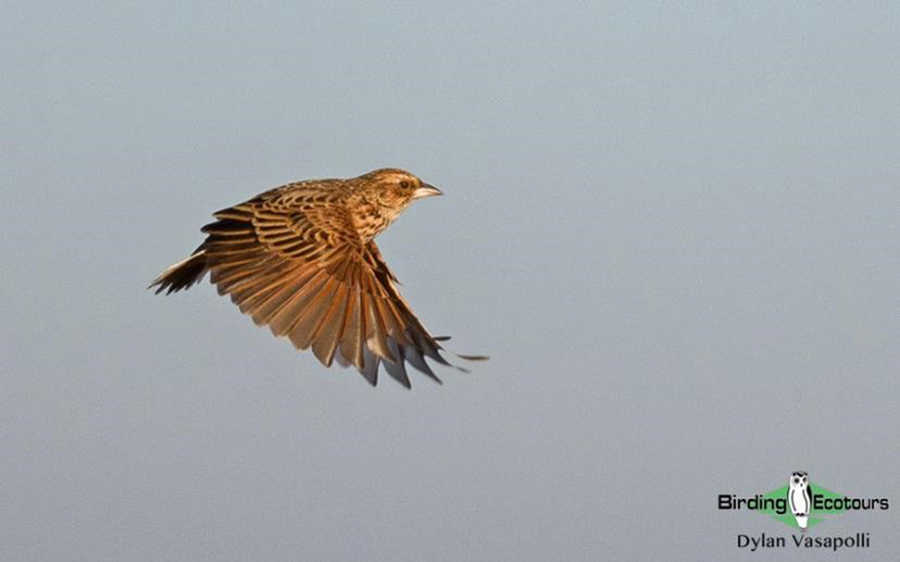
Scrubby areas nearby held Levaillant’s Cisticola, Black-chested Prinia, African Stonechat, Quailfinch (seen flying off the roadside), Cape and Yellow Canaries and a surprise Cardinal Woodpecker – miles away from the nearest tree! We were also able to compare the similar Cloud and Zitting Cisticolas, virtually side by side. Herds of Eland, (Red) Hartebeest and Plains Zebra, along with a Slender Mongoose and a Black-backed Jackal were also seen. We made our way into the reserve, adding the likes of Black-winged Kite and both Pied and Wattled Starlings, before continuing onwards to the main Diepkloof Visitor Centre and picnic site, where we would spend some time walking around and birding.
This area always hosts excellent birding, and today was no different as we enjoyed a number of the reserves’ specials such as White-backed Mousebird, Acacia Pied Barbet, Red-throated Wryneck, the tiny Fairy Flycatcher (a winter visitor to the area), African Red-eyed Bulbul, Wailing Cisticola, Bar-throated Apalis, Chestnut-vented Warbler, Fiscal Flycatcher, White-bellied Sunbird, White-browed Sparrow-Weaver, Thick-billed Weaver and Cape Bunting. A wide range of other species were also present including Speckled and Red-faced Mousebirds, Black-collared and Crested Barbets, Dark-capped Bulbul, Neddicky, Cape White-eye, Cape Robin-Chat, our first of many Mountain Wheatears, Familiar Chat, Amethyst Sunbird, Southern Grey-headed and Cape Sparrows and Black-throated Canary. Large flocks of mixed seedeaters were seen feeding in the area, with the bulk of the numbers comprising of Southern Red Bishop and Southern Masked Weaver, but also containing Red-billed Quelea and Red-collared and White-winged Widowbirds.
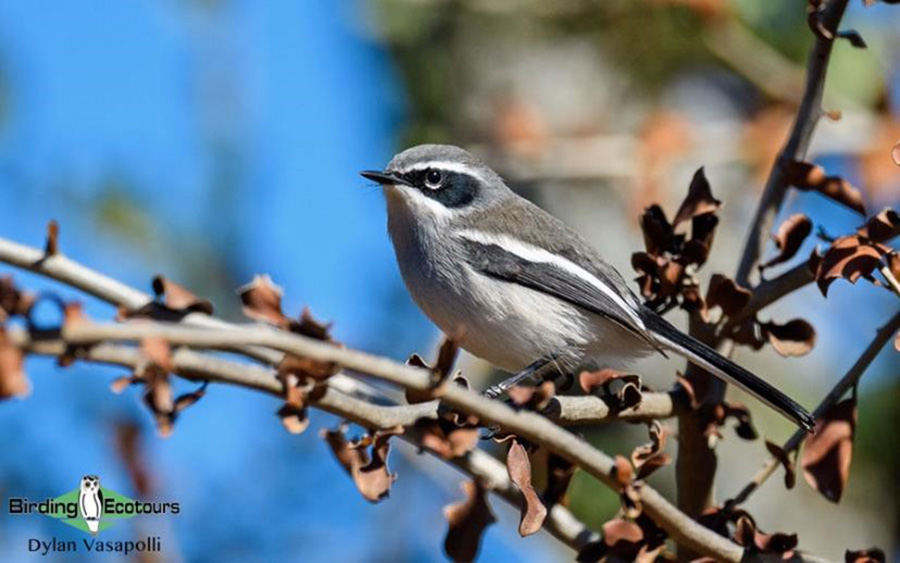
After some excellent birding, we continued on with the tourist drive, that explores the top plateau, and excellent acacia woodlands on the south side of the reserve. As is usual passing through the mountainous top part of the reserve through the midday period, it is often quiet. Birds were few and far between, but with persistence we eventually got onto Eastern Long-billed Lark, another of the main specials of the area, along with Sentinel Rock Thrush (a winter visitor) and Nicholson’s Pipit. We descended and enjoyed a lunch break on the shores of a dam, though with little birdlife around – only a Reed Cormorant and Cape Wagtail. The drier grasslands of this section of the reserve held Desert Cisticola and Ant-eating Chat, before we began exploring the excellent acacia thornveld that also creeps into this part of the reserve. The birding here was excellent, as we added the likes of Swainson’s Spurfowl, Chinspot Batis, Brubru, Bokmakierie, Brown-crowned Tchagra, Rattling Cisticola, Kalahari Scrub Robin and the stunning Black-faced and Violet-eared Waxbills. A lovely Western Barn Owl at its day roost was our last sighting before leaving the reserve.
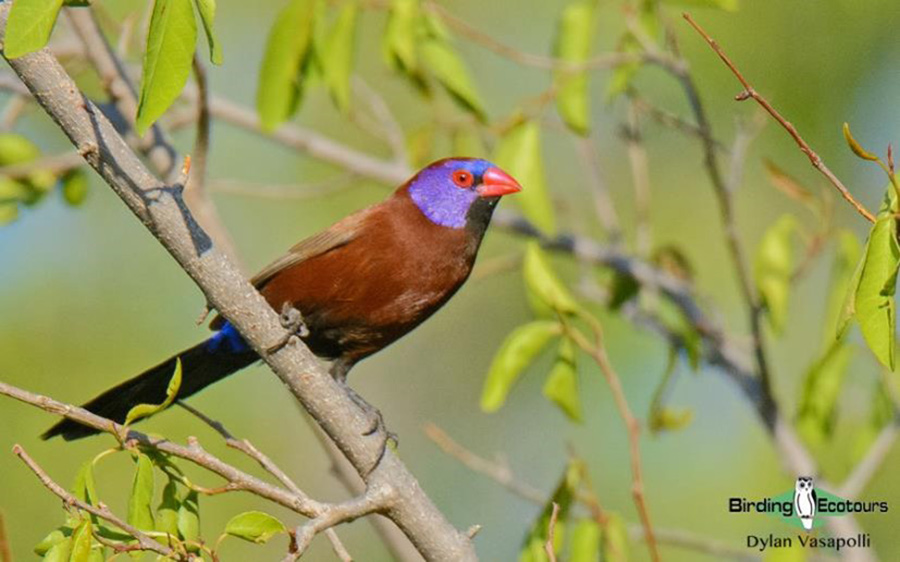
We continued onwards to the Tsakane Pans, where we had roughly an hour to bird, before sunset. The pans were resplendent in the setting sun, and full of birds! Hundreds of waterfowl dotted the open water, with a wide variety of species present – namely, White-faced and the scarce Fulvous Whistling Ducks, Spur-winged and Egyptian Geese, South African Shelduck, Cape Shoveler, Blue-billed (Hottentot), Cape and Red-billed Teals, Southern Pochard and the sought-after Maccoa Duck, together with many Little Grebes. Good numbers of African Snipe were displaying around the marshy edges, while the shallower sections of water held Black-winged Stilt, Pied Avocet and a few Greater Flamingos. While watching an African Swamphen, we enjoyed excellent views of a Black Crake as it popped out into the open and gave us stunning views! Further birding revealed Black-headed, Purple and Squacco Herons, Pied Kingfisher, Grey-headed Gull, African Sacred, Glossy and Hadada Ibises, along with a steady stream of Brown-throated Martins loafing about above the dam. We were able to entice a few Lesser Swamp Warblers out into the open, but the Little Rush Warbler wasn’t as obliging. Just as we were about to call it a day, with the sun having set, a group of the beautiful, yet tiny, Orange-breasted Waxbills flew in, and eventually showed well, before we tried for African Rail – which too showed exceptionally well in the dying light, and capped off an excellent day’s birding!
